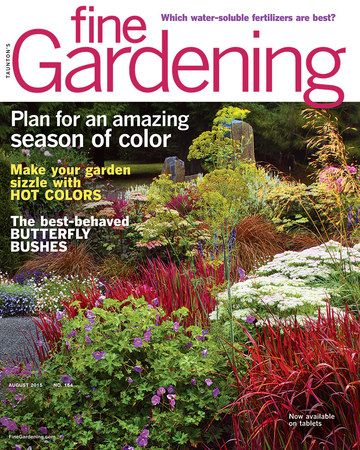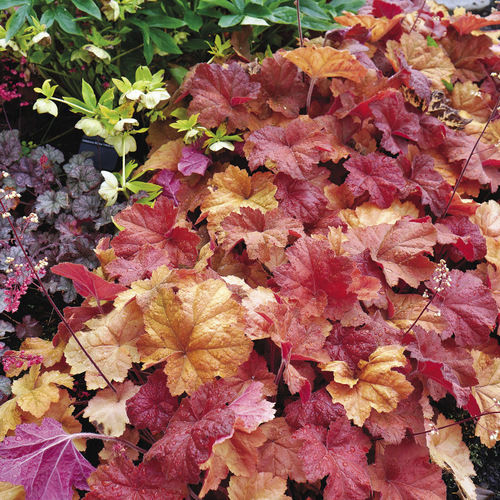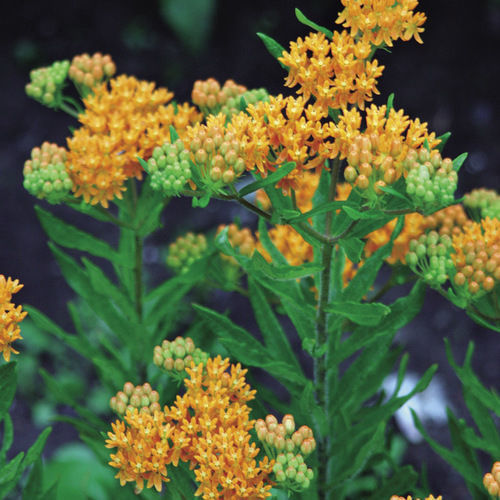Fine Gardening – Issue 164
-
Some Like it Hot: Plant IDs
Plant ID's for the article "Some Like it Hot" by Carol Collins in Fine Gardening Magazine issue #164.
-
Regional Picks: Hot-Colored Plants - Midwest
1. ‘Southern Comfort’ Heuchera Name: Heuchera ‘Southern Comfort’ USDA hardiness zones: 4 to 9 Size: 14 inches tall and 2 feet wide Conditions: Full sun to partial shade; moist to…
-
Regional Picks: Hot-Colored Plants - Northeast
1. Giant Knapweed Name: Centaurea macrocephala USDA hardiness zones: 3 to 7 Size: 3 to 5 feet tall and 2 to 3 feet wide Conditions: Full sun to partial shade;…
-
Regional Picks: Hot-Colored Plants - Northwest
1. ‘Firefly’ Heather Name: Calluna vulgaris ‘Firefly’ USDA hardiness zones: 4 to 7 Size: 18 inches tall and wide Conditions: Full sun; well-drained soil This sweet little evergreen has a…
-
Regional Picks: Hot-Colored Plants - Mountain West
1. ‘Cheyenne Spirit’ Coneflower Name: Echinacea ‘Cheyenne Spirit’ USDA hardiness zones: 4 to 10 Size: 24 to 30 inches tall and 2 feet wide Conditions: Full sun; well-drained soil (moderate…
-
Regional Picks: Hot-Colored Plants - South
1. Butterfly Weed Name: Asclepias tuberosa USDA hardiness zones: 4 to 9 Size: 18 to 24 inches tall and 12 to 18 inches wide Conditions: Full sun to partial shade;…
-
Regional Picks: Hot-Colored Plants - Southern Plains
1. Darcy’s Mexican Sage Name: Salvia darcyi USDA hardiness zones: 6 to 10 Size: 3 to 4 feet tall and wide Conditions: Full sun to partial shade; well-drained soil This…
-
Water-Soluble Fertilizers
If you have ever shopped for fertilizer for your plants, then you know the wide variety of options available. Water-soluble fertilizers are popular, often because they seem easy to work…
-
Why Do Greens Bolt?
No matter what you do, when you grow lettuces and other greens in your garden, they will eventually start growing taller and blooming. Most people assume that it’s just high…
Featured Articles
-
The Secret to Big Homegrown Onions
The number one factor for success is being aware of your latitude.
-
Use Branches to Add Color to a Container
At Chanticleer, a public garden near Philadelphia, my main job as a horticulturist is to help create and maintain the innovative plantings that have made the garden famous. But members…
-
One Peak, Four Seasons of Interest: Plant IDs
Identify the plants from the article 'One Peak Four Season of Interest' from Fine Gardening Magazine issue #164
-
One Peak, Four Seasons of Interest
Most of us want our gardens to look fabulous all the time—no matter the season. That’s great if you are willing to put in the time and money required to…
-
Sterile Varieties of Butterfly Bush
I have mixed feelings about growing and promoting butterfly bushes. On the one hand, they are beautiful and reliable garden plants; on the other hand, their weedy nature cannot be…
-
How to Grow Melons
One of the greatest tasty treats of summer is a sweet, vine-ripened melon picked from your own garden. The quality is unsurpassed and will put to shame the bland shipping…
-
Some Like It Hot
Using hot colors in the landscape
-
Plants for Soggy Spots
Lots of gardeners have at least one area of their property that never seems to dry out. It is, invariably, in a location that screams for a garden, but most…
-
Beyond the Basic Butterfly Bush
Few sights are as quintessentially associated with summer as butterflies perched on the blossoms of butterfly bush (Buddleia spp. and cvs., USDA Hardiness Zones 5–9). While the profusion and prodigious…






















